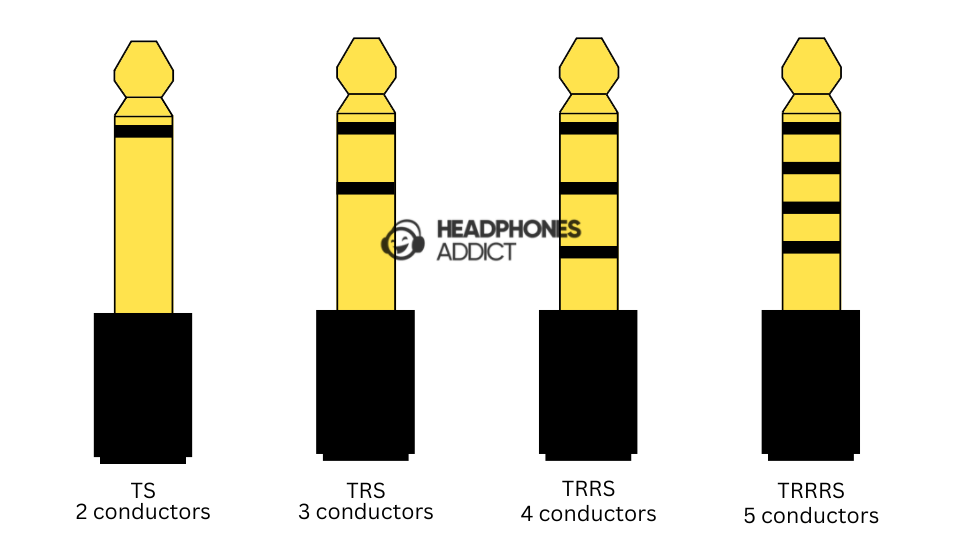Are All 3.5 Mm Jacks The Same?

When you think about listening to music, watching videos, or making phone calls, you might picture a little plug that connects your headphones or speakers to your device. That plug is called a 3.5 mm jack. But have you ever wondered if all 3.5 mm jacks are the same? Let’s dive into this topic and find out why it matters to you!
Why 3.5 mm Jacks Matter
The 3.5 mm jack is one of the most common audio connectors used today. It’s found on many devices like smartphones, laptops, tablets, and even some cars! Understanding whether all 3.5 mm jacks are the same can help you choose the right headphones or speakers and avoid frustrating moments when they don’t fit or work properly.
What’s in a 3.5 mm Jack?
A 3.5 mm jack is a small cylindrical plug that connects to a matching port. But not all 3.5 mm jacks are created equal! They can differ in a few important ways:
1. Types of Jacks: TRS vs. TRRS
-
TRS (Tip-Ring-Sleeve): This is the standard 3.5 mm jack with three sections. It’s mainly used for audio and doesn’t support a microphone. You’ll find it on many headphones designed just for listening to music.
-
TRRS (Tip-Ring-Ring-Sleeve): This type has four sections and can handle both audio and microphone input. You’ll see TRRS jacks on headphones with built-in mics, like those used for phone calls or gaming.
2. Different Configurations
While TRS and TRRS are the main types, there are also variations in how these jacks are wired. For example, the microphone might be on a different ring in some models. This means that a TRRS plug from one brand might not work with a device that uses a different wiring configuration. It’s like trying to fit a square peg in a round hole!
3. Quality Matters
Not all 3.5 mm jacks are made from the same materials. Some are gold-plated, which can help reduce corrosion and improve sound quality. Others might be made from cheaper materials that can wear out quickly. If you want the best sound experience, investing in a quality jack can make a difference.
Real Examples: When Jacks Don’t Match
Let’s look at a couple of real-life scenarios where not all 3.5 mm jacks are the same can cause confusion.
The Headphone Dilemma
Imagine you just bought a new pair of headphones with a TRRS jack, excited to use them with your smartphone. But when you plug them in, you notice that the microphone isn’t working. This could be because your phone requires a specific wiring configuration that your new headphones don’t support. It’s frustrating, right?
The Audio Interface Mix-Up
If you’re a budding musician and you want to connect your headphones to an audio interface, you might run into another issue. Some audio interfaces only accept TRS jacks, which means your TRRS headphones won’t work properly. You might hear sound, but the microphone won’t pick up your voice. Knowing the difference can save you time and money!
Practical Tips for Choosing the Right Jack
Now that you understand the differences between the types of 3.5 mm jacks, here are some practical tips to help you make the right choice:
1. Check Your Devices
Before buying new headphones or speakers, check the specifications of your devices. Look for details on whether they require TRS or TRRS jacks. This simple step can save you from the hassle of returning items that don’t fit.
2. Read Reviews
When shopping online, take a moment to read customer reviews. Look for comments about compatibility with different devices. This can give you insight into whether the product works well for others.
3. Invest in Quality
If you use your headphones or speakers regularly, consider investing in a quality product. Look for well-known brands that offer a warranty, as this can be a sign of durability and reliability.
4. Consider Adapters
If you find yourself with a TRS device but want to use TRRS headphones (or vice versa), don’t worry! There are adapters available that can help you connect the two. Just make sure you choose one that’s compatible with your devices.
Conclusion: Know Before You Plug In
So, are all 3.5 mm jacks the same? The answer is a clear no! While they may look similar, the differences in type, wiring, and quality can greatly affect your audio experience. By understanding these differences, you can make better choices when selecting headphones or speakers.
Remember to check your devices, read reviews, invest in quality, and consider adapters if needed. With this knowledge, you’ll be well-equipped to enjoy your favorite music, movies, and calls without any hiccups. Happy listening!



Comments ()